NORTHERN CAPE




































The Northern Cape Province has many unique and unexplored attributes and is the largest in terms of landmass in South Africa. It has a coastline of more than 300kms with a population of more than 1.3-million people. The competitive advantage that we hold is the sheer magnitude of our landmass; our mineral riches; our ever present sun; wind and hydro-energy resources and our fresh produce. Our fresh produce includes vegetables, grain, fruit and protein. We are also home to the best wines in the country together with awe-inspiring landscapes and breath-taking fauna and flora that define our tourism offering.

The Province is host to most of South Africa’s renewable energy projects, due to its superior endowment of solar radiation and wind speeds. It also has unparalleled potential to contribute to global green hydrogen production and is poised to play a significant role in the Just Energy Transition. Green hydrogen production will enable us to effect a paradigm shift in the fortunes of the people of the Northern Cape and South Africa. It will also support the implementation of South Africa’s COP27 commitments in terms of the global decarbonisation agenda.
The strong and resilient mining sector also offers investment opportunities, in mineral and metal processing. With the abundance of resources, energy and other critical investment infrastructure that is being created, the Northern Cape is clearly demonstrating that shortly it will surpass all projections. Tourism presents one of the best opportunities as we continue to consolidate our efforts to market the province locally and internationally, while at the same time seeking investment in new assets, products and experiences.
Whether the traveller seeks adventure or contemplative silence and space, unmatched luxury or rough terrains, the Northern Cape provides superior experiences in a myriad of public and private reserves. Adventure tourists can expect a treat and diverse natural beauty abounds, from the Kalahari Desert and the Augrabies Falls to the inimitable glories of the Namaqualand in full bloom. These assets are backed by strong incentives for investors, a well-established hospitality sector offering world-class accommodation, a growing conferencing sector and courteous, friendly and professional staff whose Northern Cape welcome is universally acknowledged.
Our positioning, together with our vast and flourishing sea, land and air infrastructure networks will facilitate easy access to markets, capital and technology by the smart investor who will certainly buy into our vision of a Modern, Growing and Successful Northern Cape. To this end, market leaders both within our Mother continent and globally are encouraged to expand their horizons by investing in our Home Province, the Northern Cape – the place where economic possibilities are awaiting the savvy investor. Being mindful of our unlimited economic potential from an investment perspective, we are indeed proud to present to you the Northern Cape Investment Prospectus for your perusal and consideration.
THE NORTHERN CAPE IS A PROVINCE that has tremendous investment opportunities. This prospectus presents a prime investment destination and I request you to consider the Northern Cape Province as your preferred investment partner.

Geographically the Northern Cape constitutes the largest province of the Republic of South Africa, which in contrast, has the smallest population. Roughly 1.1-million people reside in a land mass covering a fraction more than 30% of South Africa’s land surface. It borders on four other provinces, the Atlantic Ocean to the west and the countries of Namibia and Botswana to the north, making it an ideal gateway to West African and other international markets.
The province offers profitable investment opportunities in mineral and metal processing, agricultural production and - processing, fishing, mariculture, energy, tourism, renewable energy and the knowledge economy. Access to raw materials, affordable energy, and upgraded infrastructure are further compelling factors to attract investment.
The province has untold mineral riches, impressive landscapes and vistas which are attracting increasing numbers of tourists who want to experience the rugged outdoors adventurous trips. Two great rivers and a sophisticated irrigation scheme supports high-value agriculture in crop production and livestock. The highest solar radiation levels South Africa and incredibly clear skies suitable for astronomy combine to create a unique destination which is already attracting investment.
Billions of rands have recently been invested in the solar power and radio astronomy fields invite other potential investors to investigate what we have to offer. South Africa’s investment is under way at the Gamsberg Zinc project and iron ore and manganese continue quantities. Between January 2011 and March 2016, the province received 486 foreign direct are underway to further boost investment prospects. The rail network is receiving university has opened in Kimberley and a lot of work is going in to creating competitive investors to join us on the journey to economic growth and prosperity.
Tourism is recognised for its immense potential and its significant contribution to the economy. The 1996 White Paper on the Development and Promotion of Tourism affirmed South Africa’s approach to tourism as one which is “government-led, private-sector driven and community-based” and grounded in cooperation and close partnerships between all stakeholders. Government’s recognition of the critical importance of tourism in the economy is further evident in the sector’s inclusion as one of the priority areas in the initial Industrial Policy Action Plan (IPAP), the New Growth Path (NGP, 2010) and the National Development Plan (NDP, 2012).
The tourism sector is expected to make the requisite contribution to job creation and the continued growth of the economy. The NDP is the national framework for the development of the South African economy. It recognises tourism as a highly labour-intensive industry which stimulates the development of small businesses and which generates foreign direct investment and significant export earnings. Emphasis is placed on increasing the number of tourists entering South Africa and the amount spent; the availability of tourism infrastructure; positioning South Africa as a regional shopping and business centre; and ease of access by air and travel facilitation through favourable visa regimes.
The Northern Cape Provincial Growth and Development Plan recognises the importance of tourism and its contribution to the growth of the provincial economy and job creation. The provincial priorities identified for tourism growth include among others: effective marketing, transformation of the tourism industry and SMME development, tourism infrastructure development, tourism incentives and funding and unlocking the Oceans Economy.

Investing in the supply side of our tourism economy is a critical part of achieving the socio-economic benefits to be derived from tourism, such as increased market share of tourist arrivals, tourism competitiveness and the consequent increase in employment opportunities. We invite you to explore the many investment opportunities offered by the Northern Cape, and while in our province, take time to experience the splendour of its natural beauty and diversity.

Mr Abraham Vosloo, Member of the Executive Council for Finance,


The Northern Cape has great potential: 80% of the world’s manganese reserve; 95% of South Africa’s diamond output; 13.4% of the world’s lead exports; 93% of South Africa’s lead production; 100% of Tigers Eye reserve and zinc exports account for 13% of global demand.
year also saw a decline of 6% from R204.1-billion that was achieved in Q1 2022. The country accounts for 91% of known global reserves of the platinum group metals (PGMs), 75.2% of chrome, 30.2% of manganese, 17.5% of vanadium and 13.8% of gold reserves. Thus, with exploration continuing, there is room for more reserves to be discovered, making use of the latest technologies and methods, further improving the country’s position in the mineral industry, globally.
South Africa’s mining industry continues to play a vital economic and socio-economic role in the country’s development. Furthermore, the country sits on extensive reserves and remains a world leader in the production of many minerals, despite recently producing reduced sales revenues. The country continues to have the potential to supply a large share of the global demand for many commodities.
The country’s mining industry makes a significant direct contribution to GDP. However, the contribution has been on the decline from 0.2% in 2015 to -0.3% in 2022. However, in 2021 the mining industry contributed a remarkable 0.5% following the easing of strict Covid-19 measures. In 2022, mining contributed R204.2-billion or -0.7% to gross domestic product from R219.5-billion in 2021, a significant decrease of R15.3-billion. This can be attributed to the challenges of electricity supply that put enormous strain on the economy. In the first quarter 2023, the mining industry grew by 0.9% to R200.1-billion from R198.3-billion that was achieved in the last quarter of 2022. The mining sector contributed an average of 0.04% to the GDP’s total value of R4.6-trillion. In the first quarter, the total sales revenue declined slightly by 1.8% to R191.9-billion quarter-on-quarter from R195.5-billion for Q4. This was due to a decline on sales quantities. Year-on-
The mining industry contributed about R880-billion in 2022, as compared to about R846-billion in 2021, a 4.1% increase. Despite the rail and road infrastructure constraints that resulted in the industry failing to take advantage of improved prices and demand for the year 2022. In the first quarter 2023, mining employment increased by 0.6% to an average of 476 634 of employees from 473 867 of employees that was recorded in Q4 2022. Earnings also increased by 1.2% to R46.2-billion from R45.6-billion in Q4 2022.
The Northern Cape is one of the South African provinces that has a great mining potential for economic development. It is characterised by diamonds, iron ore and manganese. Apart from these minerals, the province is rich in new technology minerals such as zinc, nickel, copper and cobalt. The Northern Cape is also home to most of South Africa’s renewable projects.
Industrial clusters in the Northern Cape include the Namakwa SEZ which will promote mineral beneficiation, the Kathu Industrial Park which will promote a large range of business opportunities as well as the deepwater port at Boegoebaai and the Upington Industrial Park to promote manufacturing, particularly the manufacturing of solar-power components. Therefore, there is a renewed call for mines to use their social licences to increase economic development and address issues including housing, skills, local enterprises and services in the areas in which they operate in order to grow the local economies.
Vedanta Zinc International’s Gamsberg project is one of the biggest in the country, and a significant investment in the Northern Cape economy. Credit: Kevin Wright/Vedanta
Source: UNCTAD 2020




















South Africa’s Renewable Energy Independent Power Producer Procurement Programme (REIPPPPP) has seen more than R200-billion committed to renewable energy projects. It aims to add some 13 225MW by 2025. Fully 60% of the projects so far allocated have been in the nation’s sunniest province. The biggest solar farm so far in South Africa is Solar Capital’s 175MW project at De Aar. Formerly famous as the railway junction, De Aar is becoming better known as a renewable energy hub.


The SKA will be the world’s largest radio telescope, made up of thousands of antennae throughout Australia and Africa, centred on the area around Carnarvon in the Northern Cape. South Africa’s own 64-dish MeerKAT telescope, which will form part of the SKA, started coming on line in 2016. The town of Sutherland already hosts an array of telescopes with a long history of providing scientists with excellent data in clear skies above the flat and dry Karoo.
Mining contributes 23.4% to the Northern Cape economy and makes up nearly 7% of South Africa’s total mining value. The mineral resource of the province is wide-ranging and impressive with significant deposits of iron ore, manganese, zinc, copper, lead, titanium, pig iron, zircon and gypsum. The overwhelming majority of the world’s manganese comes from the Postmasburg and Kalahari regions. The province is responsible for 25% of the world’s exports of the mineral. The Northern Cape produces more than 84% of South Africa’s iron ore and has two major iron belts, from Postmasburg to Hotazel, and running through Sishen and Kathu. Sishen is the most important iron-ore mine in South Africa, where operations include extraction and four beneficiation plants. The availability of natural resources, labour and infrastructure (including the Sishen-Saldanha railway line) make Sishen the ideal location.
Big plans are underway to develop a deepwater port capable of receiving large vessels at Boegoebaai. Preliminary research indicates that the project could generate income of R2.1-billion annually by handling bulk cargoes and minerals such as manganese and iron ore. There would be possibilities for linking the port to the gas fields and developing ship-repair facilities. The intention is to find a private investor or a consortium to take the project forward.
If the harbour project gets the green light, then accompanying infrastructure will follow. The best route to connect to Upington will be the subject of further studies, as will the feasibility of a new rail link. The construction requirements of a project this size would themselves be a boost to the economy of the Northern Cape.
The Northern Cape boasts a coastline of 313km but the economic value of this asset has barely been touched, despite a growth in the abalone industry and some fishing and lobster operations. Plans to boost the maritime economy in the province form part of two broader national programmes. Operation Phakisa is an initiative of the South African government to fast-track parts of the National Development Plan. The focus is on delivery and results, with strict timelines. “Phakisa” means “hurry up” in Sotho. One of the focus areas within Phakisa is the Oceans Economy programme. Three Northern Cape harbours feature in the list of harbours that will be further developed: Port Nolloth, Boegoe Baai and Hondeklip Bay. The last-named port has already received investment in the aquaculture sector.







MRO planned for Upington Airport.
An investor has identified a need to develop an MRO in South Africa and the viable location for it is Upington due to its arid climate, long airport runaway (5km) and other factors. MRO stands for maintenance, repair and overhauling. The establishment of an Industrial Park in Upington is also a critical factor which could lead to the success of this project as it offers lucrative incentives and other enabling factors.
The investor intends to develop an aviation park to accommodate maintenance, repairs and overhaul of aircraft and research and development. These activities will also include airline storage, dismantling, scrapping, painting and internal refurbishment.

Targeted sector
Aeronautics

Investment value
The total value that is required for the project is R800-million.
Job creation
A total of 400 jobs will be created by this project.
The project will be financed by the private sector with the government providing enabling infrastructure.
The business case and feasibility studies have been completed.
The Northern Cape Economic Development, Trade and Investment Promotion Agency (NCEDA) is the project leader. Partnerships are envisaged with the private sector, provincial government, local government and state-owned enterprises.
CONTACTS: UPINGTON

Upington Industrial Park, NCEDA
Contact person: Mr Hendrik Louw
Tel: +27 87 086 0365
Mobile: +27 60 997 7222
Email: houw416@gmail.com
De Aar Prieska

The first phase of the project involves producing more than 77 000 tonnes of green ammonia per year, with a green hydrogen content of approximately 13 800 tonnes per year from 2026.
The project makes use of renewable energy sources including 180MWp solar, fixed-tilt and single-axis tracking,130MWp of wind and 110MWh of battery storage.
Construction of the ammonia production facility will begin in 2023 and will include a 140MW electrolyser and 300 mtpd Ammonia Synthesis, which will be operational in 2026.
The project intends to incorporate next-generation technology that is more affordable and more efficient, hence unlocking additional economies of scale that will make the selling price competitive when compared to grey ammonia/hydrogen.



Main Project Contacts
Organisation/Entity: Prieska
Power Reserve / CENEC
Contact Person: Cobus Vermeulen
Designation: Director
Tel: 082 444 2219
Email Address: cobus@cenec com

Project focuses on the following sector/s: Renewable Energy; Hydrogen Fuel and Ammonia Fertilizer




The total value of the project: R 10 7 billion

Permanent employees 300 post construction
Supported by 25 Young Professionals and 75 Artisans




The total value of the project: As of end July 2022, R623 million has been spent on the project The R4 1 billion announced to construct the mine will be in addition to this investment.




A total number of jobs to be created (direct and indirect/construction phase). Initially around 100 jobs are anticipated scaling up to greater than 1,500 employees and contractors during construction; with a steady state employment estimate of 840. This excludes new jobs created for service provision to the mine and its employees


Quiver Green Group (Pty) Ltd is classified as an Ecosystem-based Adaptation business As a bio-economy sector enterprise it ventures throughout the various value-chains of the green economy in South Africa, with a primary focus on the Northern Cape province.



Woodchips

Primary: Green economy and Bioeconomy
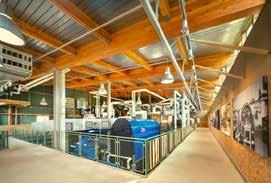

Secondary: Includes cross cutting sectors through value adding i.e. manufacturing, trade and energy sectors.

The scope of this project will be to develop approximately 3 200ha of high-potential arable land in the Namakwa District. This arable land is located in 11 distinct areas. Each of these have been described, planned and costed individually. Onseepkans has been identified as the pilot to this larger project and the bulk water system is being constructed. Of the identified land, 2 000ha has existing water licences. A further 1 200ha will have to be secured. The basket of products to be produced varies from cash crops such as lucerne and grains, but the bulk of the development is aimed at high-value crops with export potential in order to secure significant growth on the required investment.
The investment value across the 11 localities where this project will be located is around R1.7-billion.
NUMBER OF JOBS TO BE CREATED
The impact on employment due to the proposed development is estimated at 3 447 on a direct level, which will include 133 skilled and 1 772 semi-skilled positions. Most of this direct employment will be at the place of production. With the indirect and induced levels added, the impact on employment increases to more than 3 945 for the entire economy.
RESPONSIBLE INSTITUTION


PROJECT LOCATION:
District: Namakwa District, 11 localities
NUMBER OF JOBS TO BE CREATED:
This development (11 projects) will generate R521-million per annum in value of production when in full production. This will have an economic impact on various levels of the economy. It will lead to an increase in the Gross Domestic Product (GDP) of the Namakwa District. Additional value will be added through inputs such as machinery and equipment, chemicals, packing material, fuel, electricity, water, etc. This development would add an additional R200-million to the Namakwa economy on a direct level. Adding the indirect and induced levels, the impact on GDP exceeds R272-million per annum for the entire economy.
• Department of Agriculture, Land Reform and Rural Development (National)
The impact on employment due to the proposed development is estimated at 3 447 on a direct level, which will include 133 skilled and 1 772 semi-skilled positions. Most of this direct employment will be at the place of production. With the indirect and induced levels added, the impact on employment increases to more than 3 945 for the entire economy
Northern Cape Department of Agriculture


Contact person: Dr PS Kegakilwe, Chief Director Tel: 053 838 9110 | Mobile: 083 554 5583
Email: pkegakilwe@ncpg.gov.za and cc pkegakilwe@yahoo.com
• Department of Agriculture, Land Reform and Rural Development (Provincial)
• IDC
INVESTMENT VALUE:
The investment value of the 11 localities is around R1.7-billion.
• Khai-Ma Local Municipality
Vioolsdrift Kimberley Kuruman Kathu Springbok Upington Kleinzee Hondeklip Bay Sutherland Brandvlei Namakwa District ColesbergIn recent years, the Big Hole Precinct (BHP) has been identified by the Northern Cape Province as a priority tourism development zone. Recent developments in the BHP have caused a significant increase in visitor figures to the area, which in turn generates the need for further development.

Development in the vicinity began in 2005 with the comprehensive revamp of the Big Hole Museum to the value of R50-million by the De Beers Consolidated Diamond Mining Company, making it one of the best open-air museums by global comparison.


In 2012, the Mittah Seperepere International Convention Centre (MSICC) was officially launched in the Big Hole Precinct. As one of the newest convention centres in the country, the facility boasts a plenary capacity of 2 500 seats in addition to an open-air arena which also accommodates 2 500 delegates at capacity. In addition, the four-star Protea Hotel Kimberley was also built in close proximity, a facility that is being expanded at present due to increased demand for luxury rooms.
Furthermore, the Big Hole Caravan Park, formerly known as the Open Mine Municipal Caravan Park, is also located within the Big Hole Precinct adjacent to the MSICC. The park facilities comprise tent and caravan stands with 46 grassed sites with power stands, as well as modern ablution facilities with hot water, laundry and scullery facilities. The site is currently managed by the Sol Plaatje Local Municipality.
CONTACTS
Ms Jean Wilson: Chief Director Tourism
Northern Cape Department of Economic Development and Tourism
Tel: 053 839 4000 | Email : jwilson@ncpg.gov.za
TARGETED SECTORS
• Real estate
• Construction
DESCRIPTION OF THE PROJECT
Further development of the Big Hole Precinct in Kimberley to create design and attraction synergy between the Big Hole Museum, Protea Hotel Kimberley, Mittah Seperepere International Convention Centre, Kumba Skate Plaza and Frances Baard Flagship Visitor Centre.
PROJECT FINANCE
• Property Developers
• Private Investors
PROJECT STATUS
Construction is complete and the project is in operations phase. Precinct development and expansion is the next phase.
GOVERNMENT SUPPORT AND INCENTIVES
It is envisaged that the project will be financed by an investor while the government will ensure enabling infrastructure and various incentives as part of the project support.
PARTNERSHIPS
• Northern Cape Department of Public Works
• Northern Cape Department of Economic Development and Tourism
• Northern Cape Economic Development Agency
• Sol Plaatje Municipality
Mr Johann van Schalkwyk Director: Tourism Development
Northern Cape Department of Economic Development and Tourism
Tel: 053 839 4000 | Email: jvs.dtec@gmail.com
PROJECT LOCATION
Galeshewe, Frances Baard District
Some of the key attractions in the Mayibuye Precinct include:
• Mayibuye Uprising Memorial in remembrance of the innocent victims who lost their lives during the Mayibuye Uprising


• Robert Sobukwe’s office where he practiced law
• Aids Memorial in honour of all those who lost their lives to Aids
• Beer Hall site where the Mayibuye Uprising started
• Abantu Batho Hall where Sol Plaatje gave his last public lecture in 1932
• First barber shop in Galeshewe
TARGETED SECTORS
• Infrastructure
• Real Estate
• Construction
DESCRIPTION OF THE PROJECT
The project will entail the following elements:
• Interpretation Centre (new style of museum) showcasing local history and culture and celebrating icons such as Robert Sobukwe and Kgoshi Galeshewe
• Redevelopment of the Mayibuye Square as a major tourist magnet for Galeshewe
• Restoration of Robert Sobukwe’s office to preserve and exhibit the life and the role he played in the liberation struggle
• Development of the Entrance Arch to activate the precinct, giving it a sense of place
• Development of the Heroes Garden as a place of honour, reflection and especially remembrance of the fallen heroes and heroines of Galeshewe
• Public library and resource centre, incorporating modern technology and resources
• Arts and craft centre. Workshop facilities that will enable local artists to create their crafts
• Parking area. Safe and secure parking facilities
PARTNERSHIPS
• Northern Cape Department of Public Works
• Northern Cape Department of Economic Development and Tourism
• Northern Cape Economic Development Agency
• Sol Plaatje Municipality
The Mayibuye Precinct was selected as it has great potential to be developed as a tourism attraction in the area. The Mayibuye Precinct has many of the characteristics of a successful tourism precinct such as the clustering of several tourist attractions, it offers several tourism services and activities and gives tourists several reasons for visiting. It also allows for tourists and residents to interact.
CONTACTS
Ms Jean Wilson: Chief Director Tourism
Northern Cape Department of Economic Development and Tourism
Tel: 053 839 4000 | Email: jwilson@ncpg.gov.za
Mr Johann van Schalkwyk: Director: Tourism Development
Northern Cape Department of Economic Development and Tourism
Tel: 053 839 4000 | Email: jvs.dtec@gmail.com


Opportunities abound for tourism investors in the Northern Cape. The development of a wide range of tourist routes, with accompanying infrastructure, illustrates the province’s commitment to welcoming investors in this growing sector.
The Battlefields Route allows visitors to relive the war between Great Britain and the Boer Republics of the Transvaal and the Orange Free State from 1899 to 1902. The Northern Cape played a decisive role in the war and the famous Kimberley siege is depicted at the Magersfontein and McGregor Museums.
The route meanders away from Cape Town along the N7 and includes small towns, each with its own local flavour and a story to tell. Visitors will encounter towns which capture the Nama heritage of the province. Appreciate the unique stories of the people of Garies, Kamieskroon, Springbok, Okiep, Steinkopf and Vioolsdrift. During spring time, this route takes in the core of the kaleidoscope that is the Namakwa floral season. River-rafting along the mighty Orange River is a popular pursuit.
The route includes hidden gems like Garies, Kamieskroon, Hondeklip Bay, Koiingnaas and Kleinzee. Dozens of adventure and leisure options are available: Namaqua National Park, nature reserves, some of the most remote hiking and 4x4 trails imaginable. Go succulent sleuthing with a botanical guide, hike the Springbok Klipkoppie for a dose of Anglo-Boer War history, explore the countless shipwrecks along the coastline. Breathtaking scenes of the Atlantic Ocean with sightings of dolphins and whales combined with great vistas of mountains and veld make travelling in this area remarkable.
The Richtersveld is South Africa’s only mountain desert and the route travels along rugged gravel roads to quaint towns such as Eksteensfontein, Sendelingsdrift, Lekkersing, Kuboes and Sandrift. The Orange River presents a more leisurely pace with river-rafting and the best wilderness fly-fishing in South Africa, while the entire Richtersveld is a mountain biker’s dream. Learn about the lives of the nomads, be transported through dancing and storytelling.
Named after the indigenous quiver tree, the Quiver Tree Route stretches along the mighty Orange River. The Augrabies Falls in the Augrabies National Park is the world’s sixth-largest waterfall. The route will appeal greatly to families, adventure and adrenaline seekers. Experience the hot springs at Riemvasmaak, river-rafting, fly-fishing, kayaking, river cruises, 4x4, hiking and MTB trails and excellent bird-watching. Experience the longest wine-producing area in the Southern Hemisphere.
Discover the essence of the province in the heart of the Kalahari with golden dunes, wide-open skies and flat-topped acacia trees. Enjoy dune hikes at dawn, eagle-owl encounters, sand-duning and surfing in the red sand and close encounters with meerkats. Explore the Khomani San Cultural Landscape and join a guided walk with the San Khomani to rediscover the wisdom, customs and folklore of this ancient tribe. The Kgalagadi Transfrontier Park is the largest conservation area in Africa and one of only 10 Dark Skies sanctuaries in the world.
Explore famous archaeological sites, historic towns, amazing architecture and nature and game reserves.
Visitors can trace the early geological history which created vast mineral wealth like iron, manganese, diamonds and limestone. Follow in the footsteps of the early explorers like David Livingstone and Richard Moffat. Relive the Anglo-Tswana and Anglo-Boer Wars, explore the Wonderwerk Caves between Kuruman and Danielskuil. Rediscover the Khoisan history in Wildebeest Kuil near Barkly West and marvel at the Kuruman Eye, a natural spring.
The route traverses the towns of Warrenton, Kimberley, Hopetown, Britstown and Victoria West along the N12. It is the perfect stopover for travellers between Johannesburg and Cape Town. Trace a rich mining history before stopping at one of the myriad reserves for game drives and world-class birding. Anglo-Boer War enthusiasts can relive the tribulations of war at the McGregor and Magersfontein Museums and at Hopetown. Hanover has South Africa’s largest privatelyowned Karoo nature reserve, the Karoo Gariep Nature Reserve. Olive Schreiner’s house is a museum.
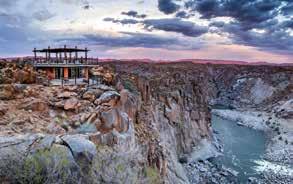


Enjoy the peace and tranquillity of the Karoo with its wideopen plains. The area was named by the Khoi and San people, who left their legacy as art on the rocks. Explore many unique experiences such as dinosaur hunting in Richmond, the SKA radio telescopes in Carnarvon, the SALT optical telescope in Sutherland, Karoo architecture and corbelled houses, Anglo-Boer War sites, rock art, ancient Palaeo Surfaces, farm stays and great Karoo cuisine and hospitality. Nieuwoudtsville is your last stop before crossing the majestic Van Rhyns Pass en route to Cape Town.
General opportunities for investors in the tourism sector include:
• nature and game reserves

• adventure tourism
• upgrading of accommodation facilities
• new attractions and entertainment features (theme parks)
• improvement of air transport networks.
Adventure sports at Kimberley: The possible establishment of an adventure sports resort in the Big Hole Precinct, Kimberley. Steam train: Reviving steam train tourism could be done along a variety of routes including routes out of Kimberley to Belmont and from De Aar to Victoria West. “Gems on Track” is the working title.
Eco-resort at Boesmansput: Development of a divertraining facility would form part of the plan at this popular fresh-water cave diving site. An eco-lodge is envisaged and a conference facility.
Wildebeest Rock Art Centre: More than 400 pieces of rock art would form the cornerstone (together with the nearby Nooitgedacht Glacial Paving) of a world-class heritage and archaeological site. Developments would include the creation of a performance arena (for the depiction of San Bushman culture) and facilities for game viewing and photographic safaris.





PROJECT LOCATION: Upington
District: ZF Mgcawu District Municipality
PROJECT BACKGROUND
There is an opportunity for Airports Company South Africa (ACSA) to develop an Aviation Park at Upington International Airport. The development can accommodate aircraft maintenance, repair and overhauling (MRO) facilities as well as services such as aircraft storage, end-of-lease refurbishment or scrapping, parts distribution and cargo development.
The climate and space for aircraft storage, the viability for green (solar) energy and a greenfield site to construct a state-of-the-art facility make Upington International Airport a favourable location for an MRO facility.
TARGETED SECTORS
• Infrastructure
• Real Estate
• Construction
• Renewable Energy
DESCRIPTION OF THE PROJECT
Upington International Airport’s 4.9km runway allows it to land the largest aircraft. Airports Company South Africa is a partner in the application to run the Upington Industrial Park (UIP) and has allocated 55ha for the creation of an Aviation Park to store and maintain aircraft and a further 30ha for commercial development. The planned storage facility could also support a variety of related sectors such as modification and demolition, parts manufacturing and warehousing and ground support equipment (GSE) repair.
PROJECT ELEMENTS
• Parking and storage of aircraft: includes the parking and stripping of aircraft and the recycling of spare parts for maintenance purposes
• Cargo hub: increase of cargo facility for important export purposes including truck stop
• Car rental facilities: providing improved facilities for car rental companies
• Electronics hub
• Solar farm project
PROJECT FINANCE
• Public Private Partnership
• Equity Partners/Investors
• Property Developers
PROJECT STATUS
A feasibility study was concluded which indicated that the projects present a viable business opportunity for ACSA and the local community. The study indicated that the development could be very lucrative.
• ACSA
• Industrial Development Corporation (IDC)
Vioolsdrift Kimberley Kuruman Kathu Springbok Colesberg Upington Kleinzee Hondeklip Bay Sutherland Brandvlei Victoria WestREHABILITATION AND DEVELOPMENT OF VICTORIA WEST AERODROME
PROJECT LOCATION
Victoria West, Ubuntu Municipality
PROJECT BACKGROUND
The Victoria West Aerodrome is strategically situated between the N12, N1 and R63. It was the fuelling aerodrome for flights from London to Cape Town in the 1950s and has significant historical value.
TARGETED SECTORS
• Agriculture
• Drone facilities and flying school
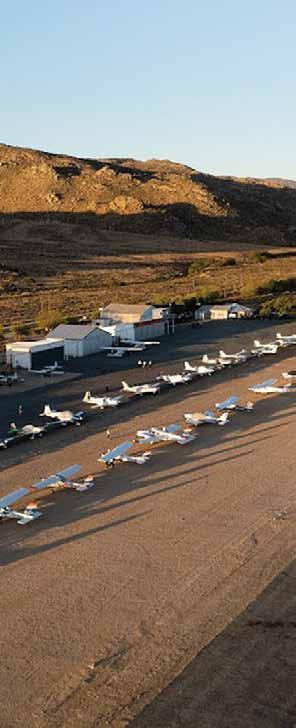
• Export through aviation
• Aviation
• Logistics and distribution
• Car rental
DESCRIPTION OF THE PROJECT
Rehabilitation and development of existing Aerodrome to service businesses, tourism and projects within a 300km radius of Victoria West. Develop the Aerodrome with a fire station to service the Aerodrome and the local municipality.
JOBS
Short term: 200+ construction phase
Long term: 300 permanent jobs
INVESTMENT VALUE
Immediate: R10-million
Short/medium term: R55-million
Long term: R25-million
Total: R100-million
Grant funding is required for the terminal building and runways. Equity funding is required for the warehousing and logistics buildings, hangers and flying school facilities.
A 22-year lease agreement has been signed with the Ubuntu Municipality. All suspensive conditions have been met.
The Rural Aerodrome Company (Pty) Ltd will investigate all partnerships.
PROJECT LOCATION: Springbok, Namakwa
NUMBER OF JOBS TO BE CREATED
150 direct jobs and 350 indirect jobs
INVESTMENT VALUE
R58.8-million
TARGETED SECTORS
• Infrastructure
• Real Estate
• Construction
DESCRIPTION OF THE PROJECT
An airfield already exists in Springbok. The project envisages the construction of a new terminal building which will include accommodation for restaurants, car rental companies, commercial banks and kiosks.

PROJECT FINANCE
• Public Private Partnership
• Equity Partners/Investors
• Property Developers
CONTACTS: UPINGTON
ACSA
Mr Riaaz Essack: Acting Group Manager:
Infrastructure & Asset Management
Mr Mark Maclean: Regional General Manager Cluster
CONTACTS: VICTORIA WEST
Ms Caroline Ungersbock CEO, Sustainable Tourism Partnership Programme
Tel: 082 880 6250
Email: caro@caroskaroo.co.za
CONTACTS: SPRINGBOK
Mr Johann van Schalkwyk: Director: Tourism
Development Northern Cape Department of Economic Development and Tourism
Tel: 053 839 4000
Email: jvs.dtec@gmail.com
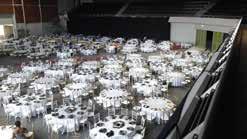


LOCATION: 2-4 West Circular Road, Big Hole Precinct, Kimberley
The Mittah Seperepere International Convention Centre (MSICC) is one of the newest convention centres in South Africa and was officially opened in 2012. It was designed and built as a multi-functional centre that can host highprofile conventions, meetings, exhibitions, launches, sporting events and shows.
The MSICC is situated in central South Africa in the city of Kimberley, opposite the world-renowned Big Hole. This location makes it perfect for events in South Africa and all the SADC countries surrounding South Africa. The MSICC has no match where it concerns events in central South Africa and boasts all the high-tech equipment necessary to host successful events.
The City of Kimberley is steeped in the history of diamonds and all the intricacies surrounding that amazing story.
Visitors can join ghost tours at night, visiting famous historical buildings in anticipation of encountering a ghost or visit the rock-painting sites of the first people of South Africa. This is also the city which was besieged during the Anglo-Boer War when Cecil John Rhodes was a resident.
Kimberley offers every type of accommodation and a host of activities including wellness spas, two shopping malls, educational workshops (interior decor, cooking) and diamond shopping.
Close to Kimberley there are several private nature reserves where you will find all the arid flora and fauna that have made the area so well-known with nature lovers. There are further offerings of photographic visits and unique hunting experiences – specialist tour guides will share their knowledge and make your visit to central South Africa a memorable one.
The main auditorium, with cinema-style seating, can seat up to 2 500 people. When the hall is arranged in banqueting style, it can accommodate up to 1 000 guests.
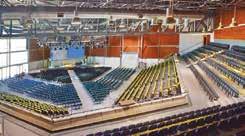
The centre also has four break-away rooms that can accommodate a total of 500 people, an industrial kitchen that can cater for 3 000 people and ample parking.
The foyer can accommodate 400 people for a variety of events and functions. A boardroom can cater for meetings of 25 people.
The amphitheatre space outside the centre can hold up to 2 000 participants for events or concerts. Marquee tents can be erected on the large outdoor space.
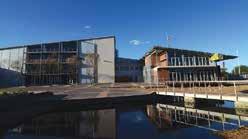
South Africa has signed multiple free trade and bilateral agreements: see www.thedtic.gov.za for more information. Free trade agreements don’t just reduce and eliminate tariffs, they also help address behind-the-border barriers that would otherwise impede the flow of goods and services; encourage investment; and improve the rules affecting such issues as intellectual property, e-commerce and government procurement. This can enable local industries to become more competitive and rely less on government subsidies.
The African Continental Free Trade Area (AfCFTA) COUNTRIES: 55 African countries. The AfCFTA integrates a market with a combined GDP of over $3.3-trillion and a population of more than one-billion people.
TERMS: The key objectives are to create a single market for goods and services and enhance economic integration in Africa. To promote structural transformation of the state parties, to progressively eliminate tariffs and non-tariff barriers to trade in goods, progressively liberalise trade in services and cooperate on customs matters and the implementation of trade facilitation measures.
Southern African Development Community (SADC) FTA
COUNTRIES: 12 SADC member states.
TERMS: The aim is duty-free trade among members.
Trade, Development and Cooperation Agreement (TDCA)
COUNTRIES: South Africa and the European Union (EU).
TERMS: The Economic Partnership Agreement (EPA) represents negotiations between SADC and the EU, whereby the liberalisation of duties for both parties is under renewed discussion.
EFTA-SACU Free Trade Agreement (FTA)
COUNTRIES: SACU and the European Free Trade Association (EFTA): Iceland, Liechtenstein, Norway and Switzerland.
TERMS: Tariff reductions on selected goods.
COUNTRIES: South Africa, Botswana, Namibia, Swaziland, Lesotho and Mozambique (referred to as the SADC EPA Group) and the EU.
TERMS: Aims to harmonise trading between SACU and the EU. The agreement covers most products. It will replace the Trade Chapter of the TDCA.
SACU-Southern Common Market (Mercosur) PTA
COUNTRIES: SACU and Argentina, Brazil, Paraguay and Uruguay.
TERMS: Tariff reductions on selected goods.
Zimbabwe/South Africa bilateral trade agreement
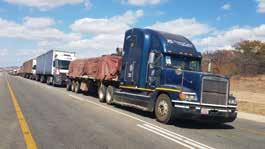

COUNTRIES: Zimbabwe and South Africa.
TERMS: Preferential rates of duty, rebates and quotas on certain goods traded between the two countries.
Generalised System of Preferences (GSP)
COUNTRIES: Offered to South Africa as a developing country by the EU, Norway, Switzerland, Russia, Turkey, US, Canada and Japan.
TERMS: Preferential market access for specified industrial and agricultural products.
African Growth and Opportunity Act (AGOA)
COUNTRIES: Granted by the US to 39 Sub-Saharan African countries.
TERMS: Preferential access to the US market through lower tariffs or no tariffs on approximately 7 000 products.
Northern Cape Department of Economic Development and Tourism
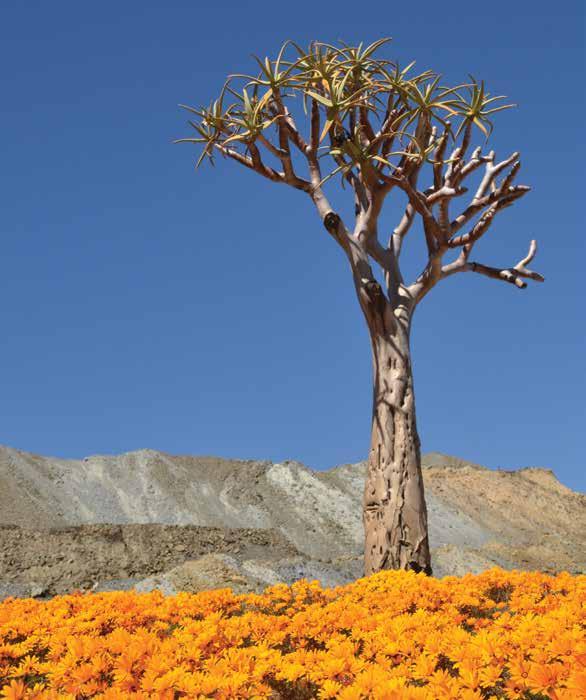

Metlife Towers, 13th Floor, Cnr Stead and Knight Streets, Kimberley, 8309
Tel: +27 53 839 4000
Contact: Head of Department Mr T. Mabija
Email: TMabija@ncpg.gov.za
Website: www.economic.ncape.gov.za
Northern Cape Economic Development and Investment Promotion Agency



Tel: +27 53 833 1503
Contact: Acting CEO Mr Hendrik Louw
Email: hlouw@nceda.co.za
Website: www.nceda.co.za